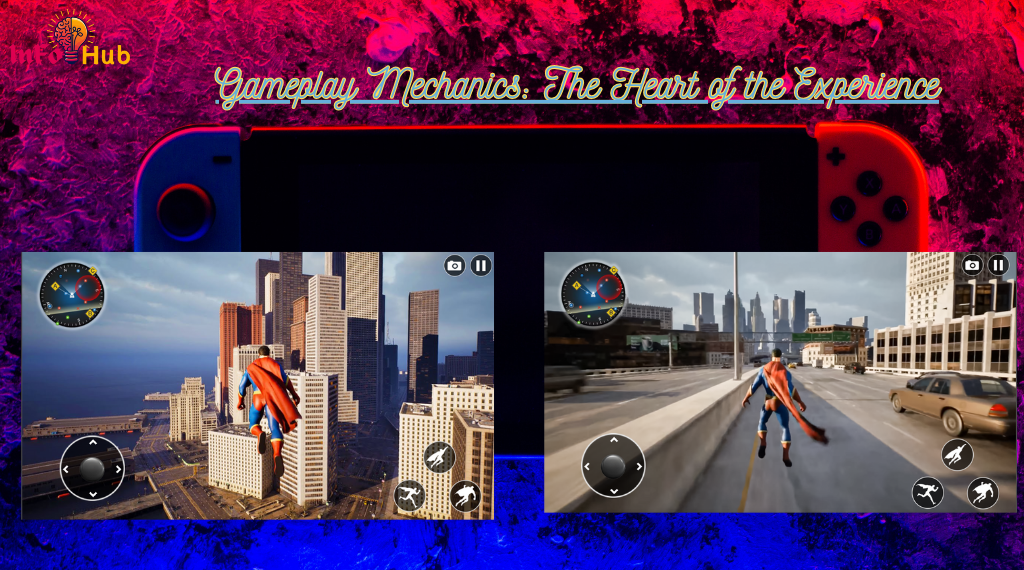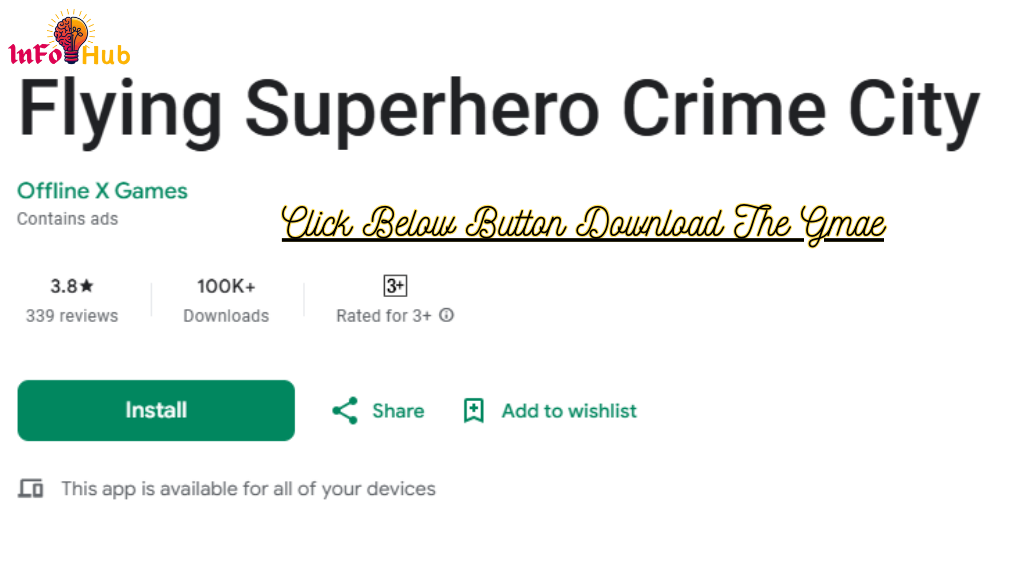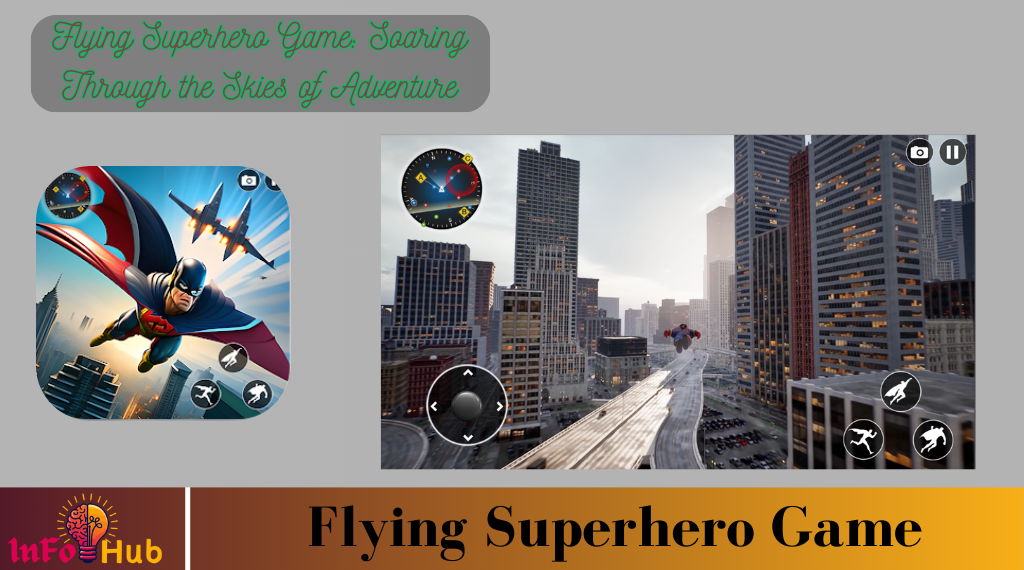In the vast universe of video games, few concepts capture the imagination as powerfully as the idea of soaring through the skies as a superhero. A flying superhero game is more than just a digital experience; it’s a chance to live out the fantasy of possessing extraordinary powers, defying gravity, and saving the world from the brink of chaos. This genre combines the thrill of flight, the allure of superhuman abilities, and the satisfaction of heroic deeds into a single, immersive experience. In this 2500-word exploration, we’ll dive into the elements that make a flying superhero game truly exceptional, from gameplay mechanics and storytelling to world-building and player engagement.
The Essence of a Flying Superhero Game
At its core, a flying superhero game is about freedom. The ability to take to the skies, unshackled by the limitations of the ground, is a liberating experience. Players are no longer confined to walking or running; they can glide, hover, and dart through the air with unparalleled speed and precision. This sense of freedom is amplified by the superhero element, which grants players extraordinary powers beyond flight. Whether it’s super strength, energy blasts, or the ability to manipulate the environment, these powers make the player feel unstoppable.
The appeal of a flying superhero game lies in its ability to make players feel like they’ve stepped into the shoes of their favorite comic book or movie hero. It’s not just about flying; it’s about embodying the ideals of heroism, justice, and courage. The game becomes a platform for players to express themselves, make moral choices, and leave their mark on a dynamic, ever-changing world.
Gameplay Mechanics: The Heart of the Experience

The success of a flying superhero game hinges on its gameplay mechanics. Flight, in particular, must feel intuitive, responsive, and exhilarating. Here are some key elements that define the gameplay:
- Flight Controls: The way flight is implemented can make or break the game. Players should have full control over their movement, including ascending, descending, banking, and hovering. Advanced mechanics like mid-air dashes, barrel rolls, and precision landings can add depth to the experience. The controls should strike a balance between realism and accessibility, ensuring that even novice players can enjoy the thrill of flight.
- Superpowers: Flight is just one of many abilities a superhero might possess. A great flying superhero game offers a diverse array of powers, each with its own unique mechanics. For example, players might use heat vision to take down enemies, telekinesis to manipulate objects, or force fields to protect themselves from attacks. These powers should be seamlessly integrated into the gameplay, allowing players to chain abilities together for devastating combos.
- Combat System: Combat in a flying superhero game should be fast-paced and dynamic. Players should be able to engage enemies both in the air and on the ground, using a combination of melee attacks, ranged abilities, and environmental interactions. The combat system should reward creativity, encouraging players to experiment with different strategies and power combinations.
- Exploration: A flying superhero game is only as good as the world it’s set in. The game world should be vast, open, and filled with opportunities for exploration. Players should be able to discover hidden secrets, complete side missions, and interact with NPCs in meaningful ways. The world should feel alive, with dynamic weather, day-night cycles, and random events that keep players engaged.
- Progression System: To keep players invested, the game should include a robust progression system. This could involve unlocking new powers, upgrading existing abilities, or customizing the hero’s appearance. Progression should feel rewarding, with each new upgrade giving players a tangible sense of growth and accomplishment.
Storytelling: Crafting a Heroic Narrative
A flying superhero game is more than just a sandbox for players to wreak havoc; it’s an opportunity to tell a compelling story. The narrative should be rich, immersive, and emotionally resonant, drawing players into the world and making them care about the characters and their struggles.
- The Hero’s Journey: The protagonist’s journey should be at the heart of the story. Whether they’re a seasoned hero or a newcomer to the world of superpowers, the player should witness their growth and development over the course of the game. The story should explore themes of responsibility, sacrifice, and the moral complexities of being a hero.
- Villains and Antagonists: A hero is only as good as their villains. The game should feature a diverse cast of antagonists, each with their own motivations, backstories, and unique abilities. The conflicts between the hero and their foes should be personal and impactful, driving the narrative forward and keeping players invested.
- Moral Choices: To add depth to the story, the game could incorporate a morality system that allows players to make choices with far-reaching consequences. These choices could affect the outcome of the story, the relationships between characters, and even the state of the game world. By giving players agency, the game becomes a more personal and meaningful experience.
- World-Building: The game world should be steeped in lore and history, with a rich backstory that adds depth and context to the narrative. Players should feel like they’re part of a larger universe, with its own cultures, factions, and conflicts. The world-building should be subtle and immersive, revealing itself through environmental storytelling, dialogue, and collectibles.
World-Building: Creating a Living, Breathing Universe
The world of a flying superhero game is more than just a backdrop; it’s a character in its own right. The game world should be vibrant, diverse, and teeming with life, offering players endless opportunities for exploration and discovery.
- Open-World Design: An open-world design is ideal for a flying superhero game, as it allows players to traverse vast distances and explore every corner of the map. The world should be filled with landmarks, hidden areas, and points of interest that encourage exploration. Verticality is key, with skyscrapers, mountains, and other tall structures providing opportunities for aerial acrobatics.
- Dynamic Environments: The game world should feel alive, with dynamic environments that react to the player’s actions. For example, a battle in the city might leave behind destruction that persists throughout the game, or a storm might alter the landscape and create new challenges for the player to overcome. These dynamic elements add a layer of realism and immersion to the experience.
- NPC Interactions: The world should be populated with NPCs who have their own lives, routines, and stories. Players should be able to interact with these characters in meaningful ways, whether it’s helping them with a problem, learning about their backstory, or simply observing their behavior. These interactions make the world feel more alive and connected.
- Environmental Storytelling: The game world should tell its own story through its environments. Abandoned buildings, battle-scarred landscapes, and hidden relics can all provide clues about the world’s history and the events that shaped it. This form of storytelling encourages players to explore and piece together the narrative on their own.
See Also Golootlo App
Player Engagement: Keeping the Adventure Alive
A flying superhero game must keep players engaged from start to finish. This requires a combination of compelling gameplay, a rich narrative, and a world that feels alive and dynamic.
- Side Missions and Activities: In addition to the main story, the game should offer a variety of side missions and activities that keep players engaged. These could include rescuing civilians, stopping crimes, or uncovering hidden secrets. Side missions should be diverse and rewarding, offering players a chance to explore different aspects of the game world.
- Challenges and Achievements: Challenges and achievements add an extra layer of replayability to the game. Players might be tasked with completing a difficult aerial maneuver, defeating a powerful enemy, or discovering a hidden location. These challenges should be challenging but achievable, rewarding players with unique rewards or bragging rights.
- Multiplayer and Co-op: For players who enjoy a social experience, the game could include multiplayer or co-op modes. These modes could allow players to team up with friends to take on missions, compete in challenges, or simply explore the world together. Multiplayer adds a new dimension to the game, making it a shared experience rather than a solitary one.
- Regular Updates and Expansions: To keep the game fresh and exciting, developers should release regular updates and expansions. These could include new storylines, characters, powers, or areas to explore. By continually adding new content, the game remains relevant and engaging for years to come.
Download Flying Superhero Game

Step into the shoes of a powerful superhero and take to the skies in this exhilarating flying superhero game! With intuitive flight mechanics, a vast open world to explore, and a wide array of superpowers at your fingertips, this game offers endless opportunities for adventure and heroism. Whether you’re battling formidable villains, completing thrilling missions, or simply soaring through breathtaking landscapes, every moment is packed with excitement. Don’t miss your chance to experience the ultimate superhero fantasy—download this game now and unleash your inner hero!
FAQs About Flying Superhero Games
What is a flying superhero game?
A flying superhero game is a video game that allows players to take on the role of a superhero with the ability to fly. These games typically combine elements of action, adventure, and exploration, giving players the freedom to soar through expansive open worlds, battle enemies, and complete missions using a variety of superpowers. The genre emphasizes freedom, creativity, and the thrill of embodying a powerful hero.
What makes flying superhero games different from other action games?
Flying superhero games stand out due to their focus on verticality and freedom of movement. Unlike traditional action games where players are grounded, these games allow players to take to the skies, offering a unique perspective and gameplay experience. The combination of flight mechanics, superpowers, and heroic storytelling creates a sense of empowerment and immersion that sets these games apart.
What are some popular flying superhero games?
Some well-known flying superhero games include:
Marvel’s Spider-Man: Miles Morales (with web-swinging and gliding mechanics)
Infamous: Second Son (featuring flight-like powers)
Superman Returns: The Video Game
DC Universe Online (an MMO with flying mechanics)
Anthem (a multiplayer game with jetpack-powered flight)
Gravity Rush (a unique take on gravity manipulation and flight)
These games showcase the diversity of the genre, from single-player adventures to multiplayer experiences.
How do flight mechanics work in these games?
Flight mechanics vary depending on the game, but they generally involve intuitive controls for ascending, descending, and maneuvering through the air. Some games use simple button inputs for flight, while others incorporate more complex systems like stamina management or momentum-based movement. Advanced mechanics, such as mid-air dodges, hovering, and precision landings, add depth to the experience.
Can I customize my superhero in these games?
Many flying superhero games offer customization options, allowing players to personalize their hero’s appearance, abilities, and gear. This might include changing costumes, unlocking new powers, or upgrading existing abilities. Customization adds a personal touch to the gameplay, making the experience more engaging and unique.
Conclusion
A flying superhero game is a unique and exhilarating experience that combines the thrill of flight with the excitement of superhuman abilities. By focusing on intuitive gameplay mechanics, a compelling narrative, and a vibrant, dynamic world, developers can create a game that captures the imagination and keeps players coming back for more. Whether you’re soaring through the skies, battling formidable foes, or exploring a richly detailed world, a flying superhero game offers endless opportunities for adventure and self-expression. The sky’s the limit—so spread your wings and take flight!

